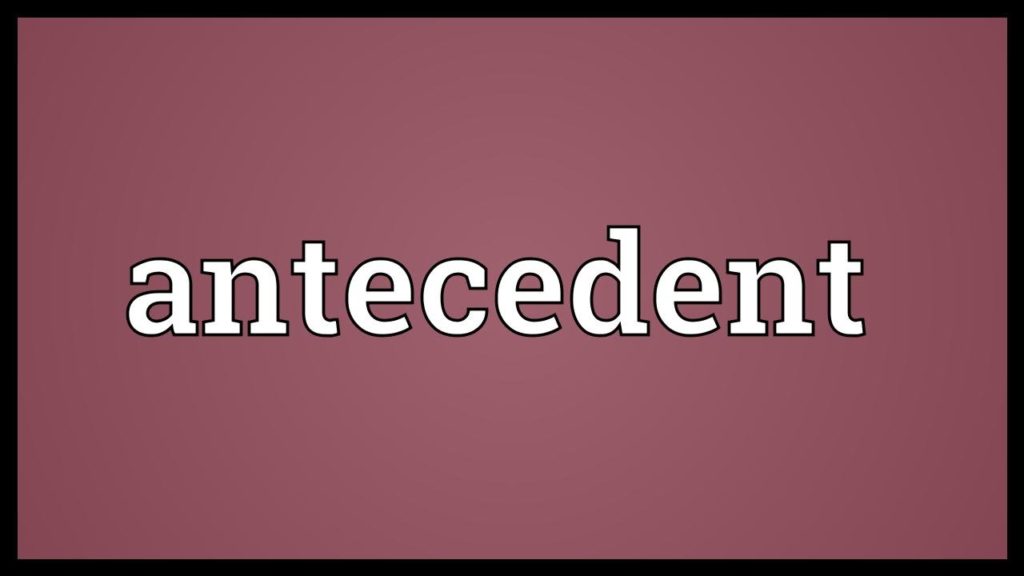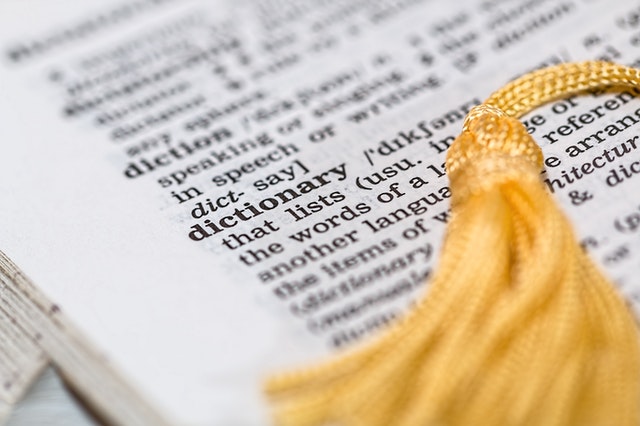Fun Facts about Antecedents

What is the meaning of Antecedent?
The Cambridge Dictionary defines ‘Antecedent’ as “someone or something existing or happening before, especially as the cause or origin of something existing or happening later.” This word has Latin origins. ‘Ante’ in Latin means ‘before’. ‘Cedere’ in Latin means ‘to go’. Put together, ’Antecedent’ means ‘to go before’ something or someone.
Merriam Webster defines an antecedent broadly as “a word or phrase replaced by a substitute”. When we use an antecedent, we do not need to repeat what or who we were talking about.

The definition of an antecedent is something that goes before other things. It means a word that describes situations or things that precede others. Antecedent should not be confused with Precedent.
Precedent refers to an event or thing that happened before others. The difference is that precedent is a guide for following things. An antecedent is simply a thing that exists before the other things in the same context.
Examples of Antecedents
To understand this concept easily, let’s look at a few simple examples.
- Lily reads a lot. Her knowledge about literature is very vast.
Here, we’re talking about Lily. We refer to her reading in the first sentence. In the second sentence, we refer to her knowledge. The reason we did not have to repeat her name, is because we already used it in the first sentence. The use of her name earlier is the antecedent. Hence, we don’t need to repeat it. - Joey told me he loves baseball.
In this example, we mention Joey’s name only once. When we talk about his love for football, we know his name already. Thus, we don’t need to repeat it. ‘He’ refers to Joey. His name is the antecedent. When we refer to him in the second part of the sentence, we don’t need to repeat his name.
- The flowers are blooming because they love bright sunshine.
We have established that we are talking about flowers. After the word ‘because’, we don’t need to say ‘the flowers’ again. This is because we have already made it clear that we are talking about the flowers. In this example, ‘the flowers’ is an antecedent. It tells us what we’re talking about.

In all these examples, the main thing that we talk about is not just a noun. When we refer to it again in the sentence or context, it becomes an antecedent. This means that there is no need to repeat that word or phrase again. In Example 2, ‘Joey’ is not just the subject or proper noun. It is also the antecedent to ‘he’.
Let’s see what happens when there are no antecedents.
If you’re at school, and your teacher says “Quiet, children. She’s coming.”, would you know who’s coming? Your teacher did not tell you who’s coming. The teacher does not specify who she is referring to.
‘She’ could mean anyone. It could be your principal. It could be your mom. It could be the First Lady of the USA. Since there is no clue as to who ‘she’ is, there’s a lot of confusion. Antecedents prevent that cinfusion. When there is an antecedent, it becomes clear who or what is being referred to.
Your teacher can say, “Quiet, children. I just spoke to the First Lady. She’s coming.” These sentences give you a clear picture of what’s happening. Now you know that the First Lady of the USA is visiting your school! ‘The First Lady of the USA’ is the antecedent to ‘she’.
Rules to follow while using Antecedents
Your teacher was very confusing in the first example in the above section. You were confused because you did not know who she was talking about. We must avoid vague pronoun references. Vague references do not give us any information.
- Always keep in mind that a pronoun and its antecedent have to be in agreement. If you have a singular pronoun, the antecedent must be singular too. If we skip this rule, our sentences will not make any sense.
Wrong: The watermelons are home. It is very fresh and sweet.
Correct: The watermelons are home. They are very fresh and sweet.
- The pronoun or phrase must be in agreement with its antecedent when it comes to gender. There can be no mismatch. A sentence becomes very odd if we do not follow this rule.
Wrong: Joey said he loves football.
Correct: Joey said she loves football.
- Some indefinite pronouns take plural antecedents. Others can also take singular antecedents. Pronouns that take plural antecedents are both, few, several, etc. Pronouns that take singular antecedents include neither, either, somebody, anyone, something, nothing, no one, everything, and so on.
Example 1: There are very few students today. They are all celebrating.
Here, ‘few students’ is the indefinite pronoun. It is followed by ‘they’.
Example 2: Each of the students has his or her favorite book.
In this example, we have to keep in mind that ‘Each’ is an indefinite pronoun antecedent. For this indefinite pronoun, we use ‘his’ or ‘her’ to indicate who we are talking about.
However, there can be some exceptions to this rule. The words almost, some, any, and none take referents based on the context. They can be singular or plural.
Example 1: All the boys packed their bags.
Example 2: All the wheat is in its sack.
There are many grammar rules for antecedents. We have now discussed the basic and important ones.
When we use antecedents, we must always remember to check the agreement in a sentence. If we do not keep this in mind, our sentences become grammatically incorrect. The antecedent will change according to the type of pronoun. It can be an indefinite or a definite pronoun. Even in these two categories, there are exceptions to the rules.
Make sure you check your grammar and follow all the rules given in this article. All the best!

Summary
- An antecedent is something that comes before the other thing
- Antecedents must agree with the rest of the sentence
- The meaning of antecedent comes from Latin
- There are some simple rules to be followed while using an antecedent
